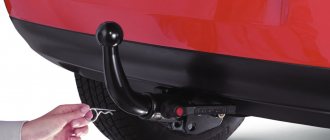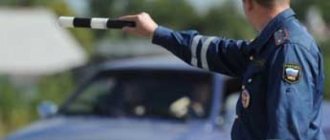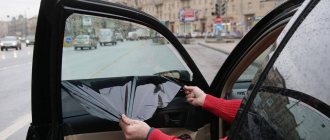A fixed post is defined as a checkpoint that does not move. It is located in a permanent location and is equipped with an office space that contains all the operational and technical equipment necessary for traffic police officers when they carry out measures to control and supervise the traffic situation within the framework of the obligations assigned to them by legal acts and job descriptions. The traffic police post operates around the clock. It is usually located on highways near intersections, as well as in the area of cargo-absorbing points and border crossings.
Where is it located and what is it used for?
A stationary traffic police post is located in a certain area. The control point is usually assigned an area of responsibility within which traffic police officers can exercise expanded powers. Non-permanent structures or vehicles do not qualify as permanent control points. They belong to the traveling category, in which the powers of the responsible employees are somewhat different.
Each post has an area of responsibility. It defines the territory with an adjacent section of road or terrain within which the traffic police unit is authorized to act in order to perform its functional duties. The area of responsibility is identified by a diagram approved by management, which must be kept by employees while on duty.
The stationary point must necessarily be adjacent to the road section. The location of permanent control points on federal roads is approved by the Ministry of Internal Affairs of the Russian Federation, and on roads of territorial significance - by the Ministry of Internal Affairs of the constituent entities of the Russian Federation. Today, a stationary traffic police post is not the only point where a car can be stopped for control. Current regulations provide similar powers to field posts.
What is a stationary traffic police post?
The term fixed post is defined as a non-mobile checkpoint equipped with a service room, which contains all the special operational and technical means. Information about what a stationary traffic police post is can be found in this article.
What it is
The traffic police post is located in a certain territory and is responsible for it. Vehicles, any non-permanent structures or bushes are not permanent posts.
The term “stationary” itself means not movable. Some people are mistaken in thinking that if a traffic police car is parked on the side of the road, then there is a post in front of them. In such a situation, the post is considered traveling.
Typically, a stationary post is located on highways near intersections, in the area of cargo-absorbing points, or near border crossings.
As a rule, permanent traffic police posts are located not far from them.
The traffic police post operates 24 hours a day. The Ministry of Internal Affairs has lifted the ban on stopping cars other than at stationary traffic police posts.
Reasons why a vehicle may be stopped
In order to check the driver’s documents, the traffic police inspector relies on the grounds specified in the order of the Ministry of Internal Affairs of the Russian Federation number 185:
- there is information that the passenger or the driver himself is involved in transport accidents, any administrative violations or crimes;
- if necessary, provide your car to police or medical personnel;
- performing regulatory actions;
- the vehicle is wanted or has been used for illegal purposes;
- in the case where the driver or passenger is a witness to the accident, to take evidence from him;
- violation of traffic rules (if traffic police officers saw it or recorded it using special devices;
- during raids related to the transportation of various prohibited goods (based on the current law);
- if assistance is required in the event of an accident;
- if the driver of the car is asked to become a witness;
- orientation towards the driver or car;
- for regulatory actions (when all machines need to be stopped),
- to ensure the passage of a column with special signals,
- when there is a need to help others,
- if the vehicle is malfunctioning and creates a threat to traffic safety,
As you can see, in the definition of “stationary post” the section on checking documents at stationary posts was removed. Therefore, traffic police inspectors have every right to stop a vehicle to check the driver’s documents anywhere. But only if he has reasons for this check (and not to stop), which are listed above.
Order of the Ministry of Internal Affairs of the Russian Federation No. 185 on the Approval of the Administrative Regulations of the Ministry of Internal Affairs of the Russian Federation has existed for 8 years. This Administrative Regulation contains the rules and regulations for the relationship between a traffic police officer and drivers and pedestrians. The norms laid down in the regulations must be strictly followed.
Each of us, if not a driver, then a pedestrian, it is useful for all of us to know our rights and responsibilities in this status. Then, when meeting with a traffic police inspector, it is possible to eliminate misunderstandings and unreasonable conflict situations that arise precisely because drivers (pedestrians) are unaware of the rights of the inspector.
So, what does the traffic police inspector have the right to present to the driver in accordance with the points enshrined in Order No. 185?
Verification of documents
The administrative regulations of the State Traffic Safety Inspectorate include a list of actions required to be performed by employees of the Russian Road Inspectorate in order to ensure the safety of all road users. The inspector has the right to perform his duties both at a stationary and mobile post.
IMPORTANT! Now the inspector has the right to carry out document checks at posts of any type. Until October 2021, this could only be done at stationary posts.
The list of powers of a State Traffic Inspectorate employee includes:
- Checking that the car owner has documents for the car and a driver’s license if there is a suspicion of a possible offense.
- Checking luggage, personal belongings and personal search upon receipt of information about the transportation of weapons, ammunition, and narcotic substances in this vehicle. If a weapon (other prohibited substances) is detected, permission to carry which has not been provided, the weapon or other prohibited items are confiscated by the employee.
The responsibilities of an employee when stopping a vehicle are as follows:
- Introduction, giving greetings in the form, communication of rank and surname.
- A clear and clear indication of the reason for stopping the vehicle. If the reason is not given, the driver has the right to ask about it.
- Presentation of a police officer's identification. It is strictly prohibited to transfer it into the hands of another person.
- The explanation with the driver is polite, only in “you”.
- Careful handling of documents received from the driver. If they contain banknotes, you should return the documents to the driver and ask them to hand over the documents again without banknotes.
The need to inform the driver about a special event
Having informed the driver about the reason for the stop - a special event - the inspector is not required to present a document confirming its implementation. If the driver insists on familiarizing himself with such an order, he has the right to go to the nearest police station and familiarize himself with the order there. The state traffic inspector has no right to interfere with such actions of the driver.
ATTENTION! Remember this clause of the regulations and exercise your right legally. If an inspector asks to present documents or carry out a search of luggage and cites a special event as the reason for such actions, the driver has the right not to carry out the inspector’s order, but to go to the police department and get acquainted with the order to carry it out.
In the video about changes in the law on communication with traffic police
There are no plans to cancel permanent posts at this time. Such posts are located on highways, operate around the clock, have identification signs and special technical equipment.
Source: https://autocarmy.ru/chto-yavlyaetsya-stacionarnym-postom-dps/
You will be interested in:
Source: https://pravo-auto.com/chto-takoe-statsionarnyj-post-dps/
Legislative regulation
The exact definition of a stationary traffic police post was noted in the Regulations in force until 1999, and in the manual on the work of traffic police, canceled in 2009. In the regulations, a post was identified as a place of duty, located in an office building equipped with the necessary facilities for carrying out activities, including technical and special means. Each traffic police officer was assigned a specific zone within which he could carry out activities.
Today, the Manual is relevant, regulating the organizational procedure for the integrated use of forces and means of the Department of Internal Affairs of the Russian Federation, which is an annex to Order of the Ministry of Internal Affairs No. 81 of January 29, 2008. In it, the concept is vague and is defined by a control point formed by a team of employees, each of whom performs duties in an office space equipped with the necessary facilities. In the Administrative Regulations, a stationary post means a checkpoint at which traffic police officers carry out their service.
Signs of fasting
The road patrol service is assigned certain obligations, for non-fulfillment or poor performance of which liability is provided. Employees perform their duties in the office premises. Its parameters are also subject to a number of requirements, consisting in the need to be equipped with equipment, tools and structures necessary to ensure that the task assigned to workers is completed in full. A stationary post may include a traffic police control point, which is an integral element of the vehicle search system. The main features of a stationary post are:
- Premises;
- Equipping with the means necessary to carry out supervision;
- Area of responsibility approved by management;
- A set of employees authorized by documents to exercise control.
Cars, booths and roadside vegetation are not considered stationary items. However, the area of responsibility may be located at some distance from the post. If a road user doubts the legality of the actions of traffic police officers, then he has the right to demand the presentation of an approved diagram with a zone located on it in which the officers have the right to perform functional duties.
Verification of documents
The administrative regulations of the State Traffic Safety Inspectorate include a list of actions required to be performed by employees of the Russian Road Inspectorate in order to ensure the safety of all road users.
The inspector has the right to perform his duties both at a stationary and mobile post. IMPORTANT! Now the inspector has the right to carry out document checks at posts of any type. Until October 2021, this could only be done at stationary posts.
The list of powers of a State Traffic Inspectorate employee includes:
- Checking that the car owner has documents for the car and a driver’s license if there is a suspicion of a possible offense.
- Checking luggage, personal belongings and personal search upon receipt of information about the transportation of weapons, ammunition, and narcotic substances in this vehicle. If a weapon (other prohibited substances) is detected, permission to carry which has not been provided, the weapon or other prohibited items are confiscated by the employee.
The responsibilities of an employee when stopping a vehicle are as follows:
- Introduction, giving greetings in the form, communication of rank and surname.
- A clear and clear indication of the reason for stopping the vehicle. If the reason is not given, the driver has the right to ask about it.
- Presentation of a police officer's identification. It is strictly prohibited to transfer it into the hands of another person.
- The explanation with the driver is polite, only in “you”.
- Careful handling of documents received from the driver. If they contain banknotes, you should return the documents to the driver and ask them to hand over the documents again without banknotes.










